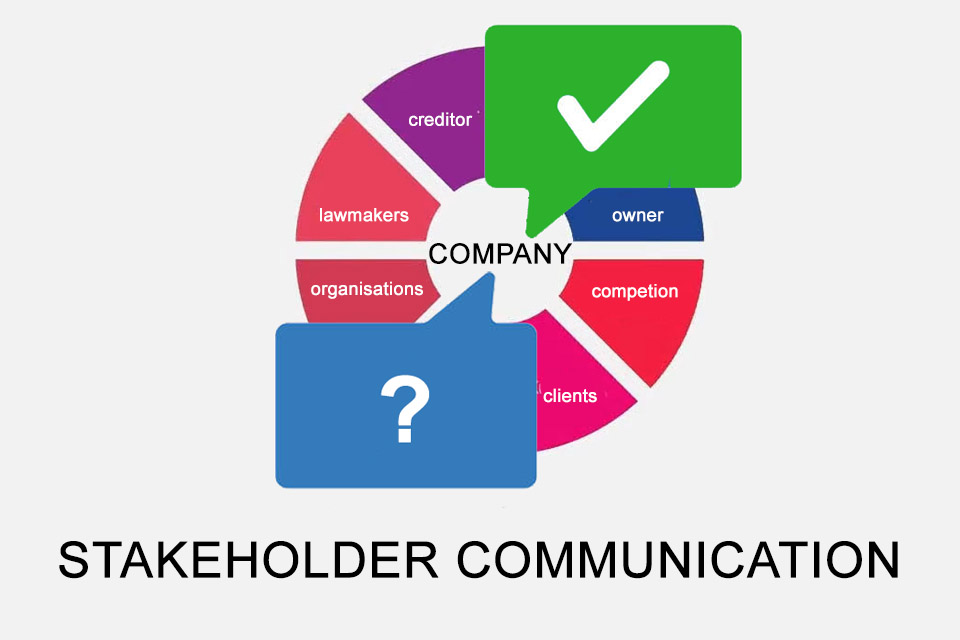What is Stakeholder Communication?
Smartpedia: Stakeholder communication addresses the regular exchange between a company and its stakeholders. It differs according to type, means, frequency and time.
Stakeholder communication – regular exchange with stakeholders
A stakeholder is a person or organisation that is directly or indirectly affected by or has an interest in the activities of a company. Stakeholder communication refers to the regular exchange of information between the company and its stakeholders. For effective, targeted stakeholder communication, it is important to know who the stakeholders are and what their goals, motives and attitudes are. This is the task of stakeholder identification and stakeholder analysis.
Influencing factors of stakeholder communication
The following aspects have an influence on stakeholder communication:
- The importance of the stakeholder for the project: The more important the stakeholder is, the more structured the communication should be planned and carried out.
- The type of communication: Would the stakeholder like to be provided with information or would he like to actively look for information himself? A distinction could be made between push and pull communication.
- The means of communication: Does he want to be informed personally in a conversation or by telephone, is an SMS or an e-mail with a short status quo enough for him, does he want reports by post, etc.?
- The frequency of communication: Does he want to be continuously up to date, is he happy about one update per week or one summary per month?
- The time of communication: When is the right time for communication? On Sunday at 5 p.m. or rather Monday morning at 7 a.m.?
Stakeholder communication is an important task in stakeholder management. Stakeholders can promote or hinder a project, they can change their goals and attitudes and also help in communicating with other stakeholders. The more important a stakeholder is, the more important communication with them becomes. The regularity of stakeholder communication depends on the importance of the stakeholder, the required and appropriate frequency, manner and timing.
Formats for communicating with stakeholders
There is a whole range of formats and events to which organisations can invite their stakeholders in order to talk to them about topics relevant to them. Below is a small selection:
- The Sprint Review in Scrum is a meeting of developers, Scrum Master and Product Owner at the end of a sprint to present the development results and determine future adjustments. Here stakeholders can learn how new features work – ideally they are demonstrated and not just discussed – and how important their perspective is in the development of news.
- The Daily Scrum is a daily event in Scrum where developers meet to share progress towards the agreed sprint goal, upcoming activities and potential problems or obstacles. Stakeholders can also participate here, but they should be aware that the exchange is not a reporting exercise.
- Stakeholders can also be invited to retrospectives in which the staff involved exchange ideas with the aim of improving their cooperation. In such a case, it naturally also makes sense to talk about the concrete involvement and cooperation between development and stakeholder.
- Requirements workshops are meetings in which requirements for a solution to be developed are collected, discussed and, if necessary, prioritised. Such a format is naturally predestined for intensive communication with stakeholders.
- Some organisations also offer so-called “Ask-Me-Anything-Sessions” in which interested parties can discuss topics to be defined.
In addition to such formats and events, there are also classic means such as newsletters, chats or forums that can be used for targeted stakeholder communication.
If you like the article or would like to discuss it, please feel free to share it in your network. And if you have any comments, please do not hesitate to send us a message.
If you are interested in more explanations, we recommend the free Stakeholder Whitepaper.
Here you can find additional information from our t2informatik Blog:



